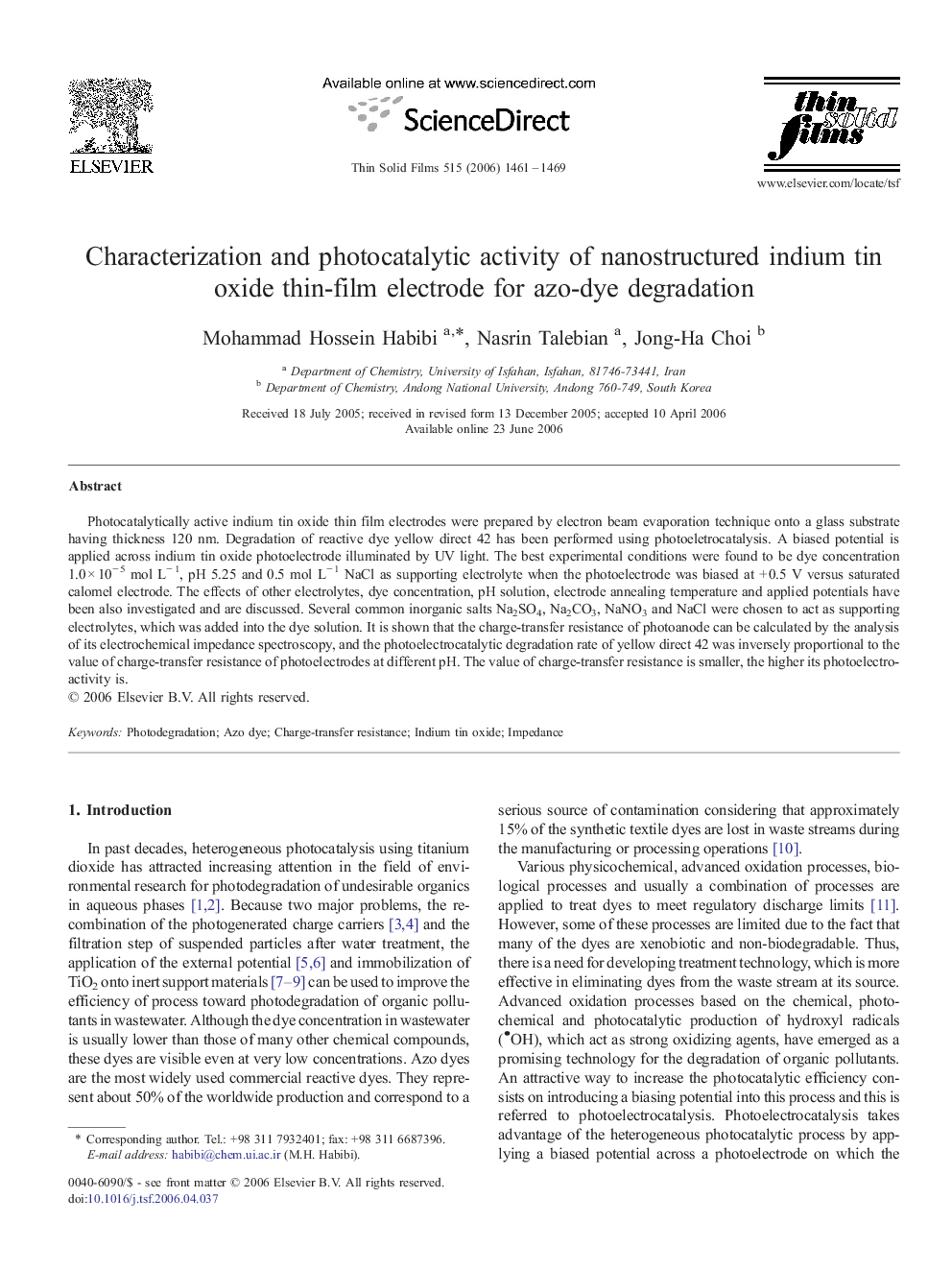| Article ID | Journal | Published Year | Pages | File Type |
|---|---|---|---|---|
| 1675048 | Thin Solid Films | 2006 | 9 Pages |
Photocatalytically active indium tin oxide thin film electrodes were prepared by electron beam evaporation technique onto a glass substrate having thickness 120 nm. Degradation of reactive dye yellow direct 42 has been performed using photoeletrocatalysis. A biased potential is applied across indium tin oxide photoelectrode illuminated by UV light. The best experimental conditions were found to be dye concentration 1.0 × 10− 5 mol L− 1, pH 5.25 and 0.5 mol L− 1 NaCl as supporting electrolyte when the photoelectrode was biased at + 0.5 V versus saturated calomel electrode. The effects of other electrolytes, dye concentration, pH solution, electrode annealing temperature and applied potentials have been also investigated and are discussed. Several common inorganic salts Na2SO4, Na2CO3, NaNO3 and NaCl were chosen to act as supporting electrolytes, which was added into the dye solution. It is shown that the charge-transfer resistance of photoanode can be calculated by the analysis of its electrochemical impedance spectroscopy, and the photoelectrocatalytic degradation rate of yellow direct 42 was inversely proportional to the value of charge-transfer resistance of photoelectrodes at different pH. The value of charge-transfer resistance is smaller, the higher its photoelectro-activity is.
